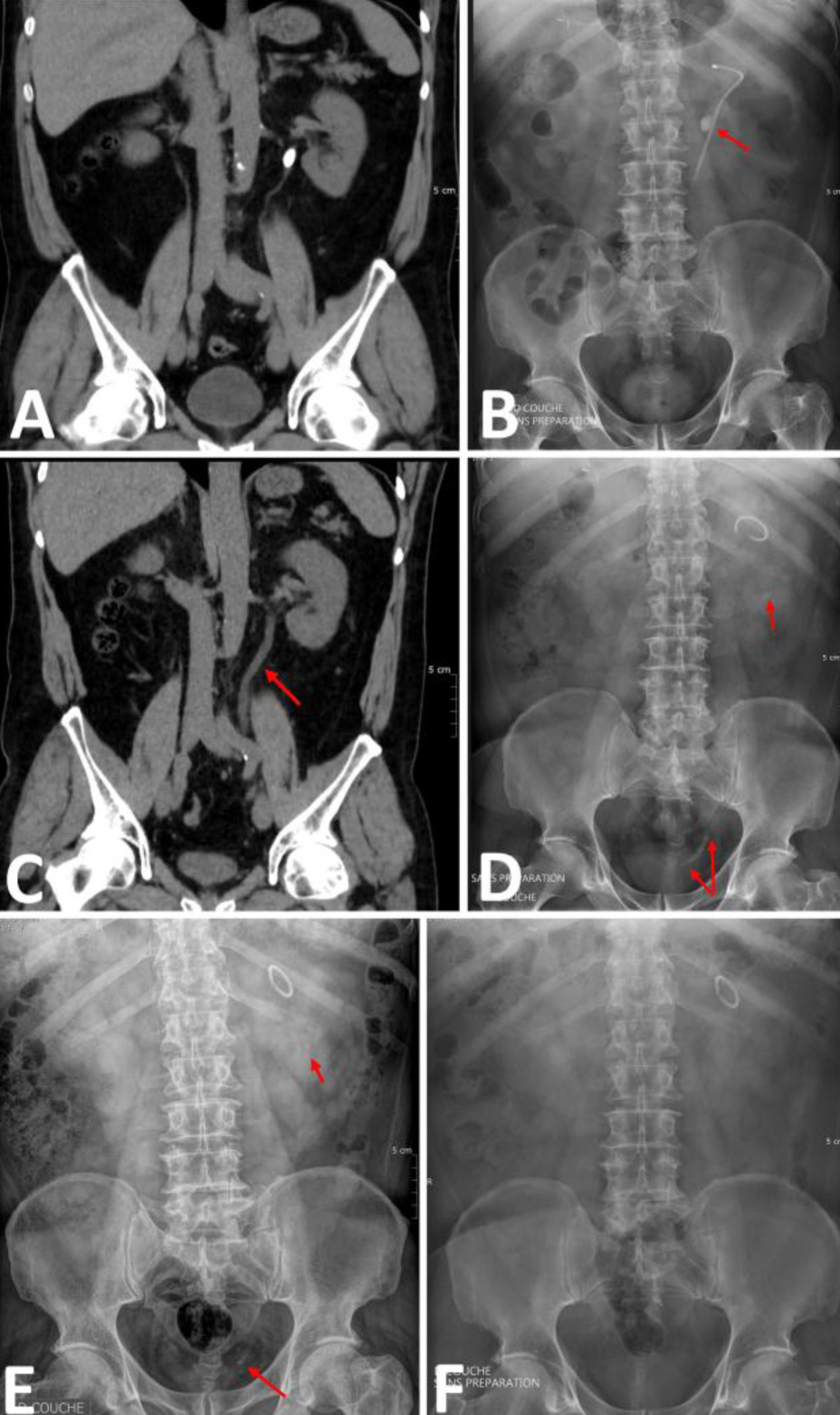BERKELEY, CA (UroToday.com) - Double-pigtail stent intolerance reduces patients' quality of life. By decreasing the amount of material in the bladder, it may be possible to attenuate the symptoms. The major innovation of the pigtail suture stent (PSS) is in the replacement of the lower part of the double-pigtail stent with a 0.3F suture.
In our study, urinary symptom scores and pain scores were significantly lower than with the double-pigtail stent. The replacement of the bladder loop with a fine suture resulted in the presence of only tiny amounts of material in the bladder. Moreover, the absence of an internal channel probably also limited renal reflux and pain. The thinning of the lower end of the device seems to limit the snagging of the stent during breathing movements. Despite the clear improvement observed with the PSS and its innovative tail, patients still had symptoms statistically different from their normal state.
We developed the PSS as a means of decreasing urinary symptoms. Patients treated for a stone or a ureteral obstructive tumor are clearly relieved with the PSS. But, we discovered fortuitously that PSS had innovative properties, probably due to the simple presence of the sutures in the ureter.
Firstly, in all cases of ureteroscopy, we observed clear dilation of the ureter intubated with the sutures. No inflammation was observed around the sutures. We also observe that the dilation was objectively measurable in CT-Scan.
Secondly, after extracorporeal shockwave lithotripsy (SWL), the stone fragments gradually slid down the PSS sutures, without renal colic. Sutures behaves like a “stone’s toboggan” (Figure 1). Moreover, ureteral dilation accelerates removal of stone fragments and increases the efficiency of SWL, often effective but limited by the narrowness of the ureter.
The double pigtail stent had been the ureteral standard device since 1967. However, since 2013, we now use a new stent reduced to a suture attached to a simple renal pigtail (MiniPSS). The advantage of this new stent is to let free the dilated ureter. We believe that use of a double pigtail stent should no longer be considered the only way to drain the ureter. Instead, the form of the stent should depend on the patient’s disease. Today, in urology, science continues to strive towards miniaturization of instruments. But, in 2014, we want to use large-diameter endoscope in the dilated ureter. Preliminary results lead us to believe that, the MiniPSS, ureteral dilatation, and the use of a large endoscope are a major advancement in endourology. With Mini-PSS, we can:
- treat stones larger than 15 mm by exclusive SWL,
- offer an alternative to percutaneous surgery,
- rehabilitate postural gymnastics for rapid evacuation of fragments,
- more easily explore the upper urinary tract dilated with MiniPSS,
- use large shockwave lithotripsy fibers or laser lithotripsy fibers in a 11F ureteroscope channel,
- combine in the same channel, Dormia and lithotripsy fiber.
We know we are in opposition with the current dogma of endourology, but we would like to inform the whole urological community of these new perspectives. We think that greater use of MiniPSS would still allow for the discovery of other unknown properties and other therapeutic indications. Experimental studies could possibly clarify the mechanisms of renal and ureteral dilatation.
A patent application has been filed and we hope to promote our new stent with an industrial manufacturer. Creating a perfect stent profile requires industrial techniques. To conclude, we underline the fact that our patients will benefit from enhanced quality of life, simplicity of treatment, and the short duration of stenting.
Written by:
Benoît Vogt, Arnaud Desgrippes, and François-Noël Desfemmes as part of Beyond the Abstract on UroToday.com. This initiative offers a method of publishing for the professional urology community. Authors are given an opportunity to expand on the circumstances, limitations etc... of their research by referencing the published abstract.
Service d’urologie, polyclinique de Blois, 1, rue Robert-Debré, 41260 La Chaussée–Saint-Victor, France

More Information about Beyond the Abstract



